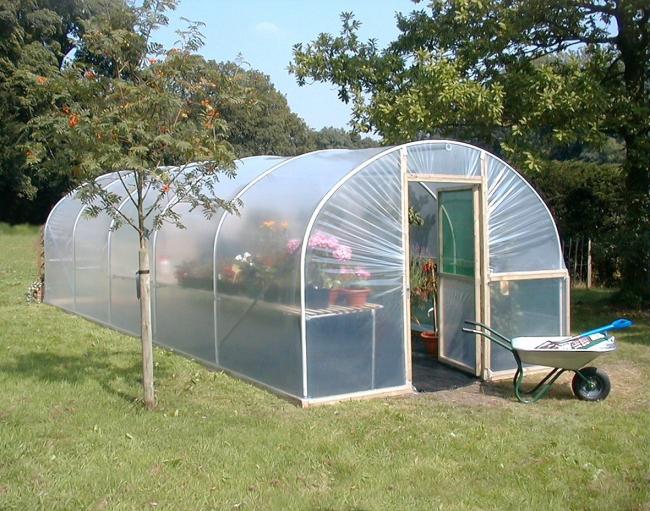
It is a wonderful world of growing plants and vegetables under the protective of the polytunnel, writes First Tunnels.
The traditional picture of the gardener is of someone toiling the soil, coaxing plants to grow in patches of earth. Alongside their supreme knowledge and experience, gardeners prayed for the right weather at the right time – a few rays of summer sunshine, fewer autumn gales and squally showers, few nights of unannounced snap frosts and just enough light rain. Only with the weather on our side would the allotment flourish with a bountiful supply of veggies.
Like many gardeners, we thought the same. Many an afternoon have spent picking out seedlings with the spring frost not yet lifted from the ground and wondered what the crop of root vegetables would be like with rain-sodden soil.

Growing plants under cover is nothing new. Many an hour was spent on a weekend afternoon deep in thought in the greenhouse and the potting shed. First Tunnels have long known and understand the true value of a polytunnel in the domestic garden.
Growing in a polytunnel is not cheating. There is an assumption that unless you win the battle against the weather, your worth as a gardener isn’t really tested.
It is simple but it isn’t always a walk in the park, growing in a polytunnel. For a start, a micro-growing-climate is created, something you must manage.
The modern polytunnel is not a glorified ‘walk-in cloche’, an accusation that was levelled at polytunnels two decades or so ago. It can be the smallest or largest of tunnels, perched in a part shaded, part full-sun location of your garden, clad in high-quality, tough, durable, thick plastic.
Growing vegetables in a polytunnel is great fun. Like many other gardeners, we haven’t looked back since discovering the sheer joy of having our own plastic tunnel, with neat and fertile beds for all veggies to grow.

We are always looking to develop our gardening prowess. Attitudes and ways of doing things change, all with one aim in mind – to grow bigger, to grow better, all in harmony with nature.
Gardening habits are expanded and refined when growing in a polytunnel. The gardener is provided with an opportunity to try their hand at growing exotic or non-traditional plants, encouraging stuff to grow that would never survive the open bed on the allotment.
It is an environment that solves many gardening problems too. If you have always struggled to bring on a crop of tasty herbs, for example, you won’t have this problem in the polytunnel.
The success of part or full self-sufficiency relies on extending your growing year. We cram as much as we can into the short months of spring and summer, trying new ways to preserve food for winter eating. With the polytunnel, we get longer to grow veg and fruit, as well as finding that yield increases for the ‘staples’. We spend summer awash with ruby-red tomatoes, lettuce leaves of all varieties, beautiful plump fruits of all kinds along with some delicate herb leaves that pack a punch way above their tiny frames.
You will, of course, need all the gardening habits you have developed over the years like keeping the polytunnel tidy, the pests out and the good insects in, the watering and the feeding and of course, enjoying the calmness of the garden.

Creating polytunnels that fit your plot and your budget, the team at First Tunnels is all about the fusion of gardening and the polytunnel experience.
For more information visit firsttunnels.co.uk.


Comments: Our rules
We want our comments to be a lively and valuable part of our community - a place where readers can debate and engage with the most important local issues. The ability to comment on our stories is a privilege, not a right, however, and that privilege may be withdrawn if it is abused or misused.
Please report any comments that break our rules.
Read the rules here